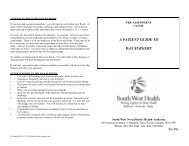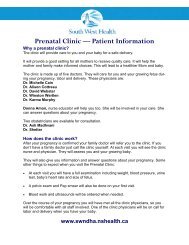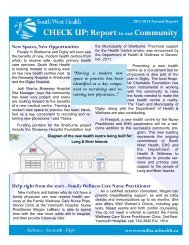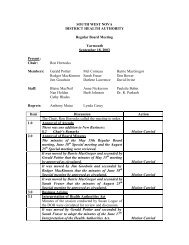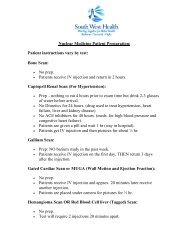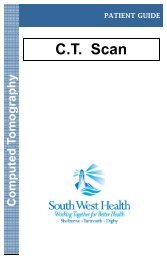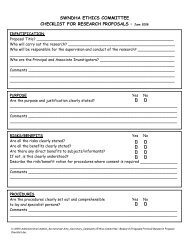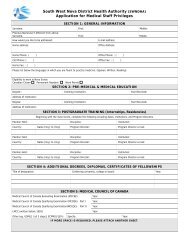Breastfeeding basics Breastfeeding basics - South West Health
Breastfeeding basics Breastfeeding basics - South West Health
Breastfeeding basics Breastfeeding basics - South West Health
You also want an ePaper? Increase the reach of your titles
YUMPU automatically turns print PDFs into web optimized ePapers that Google loves.
42 B REASTFEEDING B ASICS<br />
Get help when you notice any of these<br />
warning signs:<br />
• you have a fever<br />
• you notice a red area on your breast<br />
• your breasts feel hard<br />
• your nipples have cracks<br />
• you have pain in a breast while nursing.<br />
You can try to prevent breastfeeding problems<br />
by having your baby well latched and staying<br />
well rested. Breasts don’t need special cleaning,<br />
just bathing with water, without using soap<br />
on your nipples. If you notice some tenderness<br />
in your nipples, rub a few drops of breastmilk<br />
onto your nipples and let them air dry. Some<br />
common breastfeeding challenges are discussed<br />
below.<br />
Engorged breasts<br />
Breasts are engorged when they become<br />
swollen with milk and feel warm or hot.<br />
They also feel heavy and firm or hard.<br />
The areola may become swollen and tight,<br />
making the nipple “flatten out.” This may<br />
make it difficult for your baby to latch onto<br />
your breast properly.<br />
What causes this?<br />
Some fullness is normal in the first few days<br />
of breastfeeding as the breasts start to<br />
produce milk and fill. If your breasts become<br />
heavy, firm, and hard (engorged), some of<br />
the suggestions below may help you latch<br />
your baby correctly. Engorgement that<br />
continues after the first week with painful,<br />
uncomfortable breasts is usually caused by<br />
not “emptying” the breasts at each feeding.<br />
What can I do?<br />
Continue to breastfeed your baby.<br />
T HE E ARLY W EEKS AND M ONTHS 43<br />
Feed your baby frequently to keep your milk<br />
flowing regularly—every 2 to 3 hours is best.<br />
Wake baby to feed, if necessary.<br />
Your baby may have trouble latching on<br />
when your breasts are full and hard. To make<br />
this easier for your baby, soften the areola<br />
first. The best way to do this is to express<br />
some milk by hand. (For instruction on how<br />
to express milk, please see pages 79 – 84.)


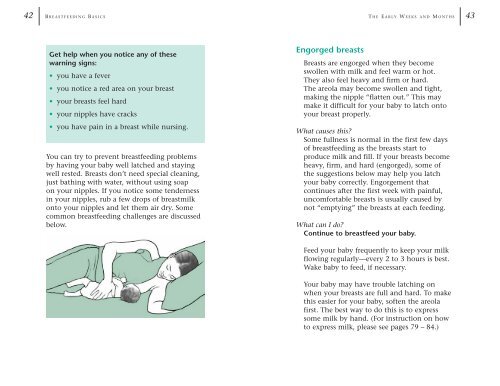
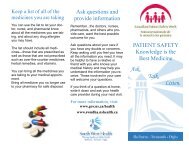


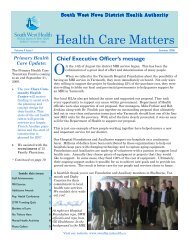
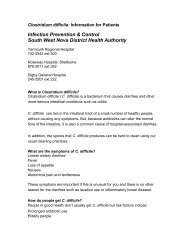
![Pressure Ulcer Prevention SWH[1].pub - South West Health](https://img.yumpu.com/26992883/1/190x115/pressure-ulcer-prevention-swh1pub-south-west-health.jpg?quality=85)
